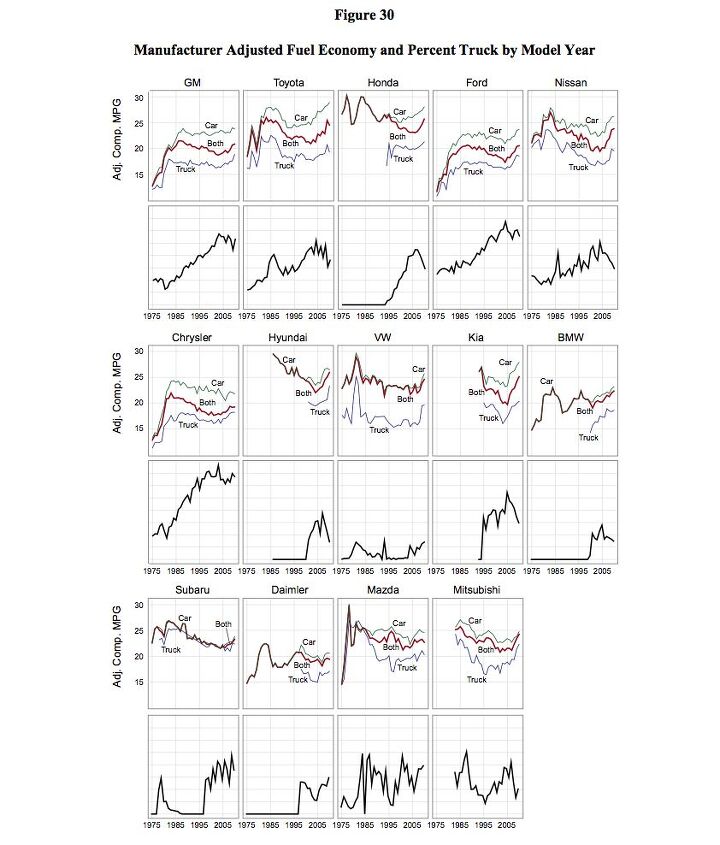Chart(s) Of The Day: EPA Breaks Down 35 Years Of Automotive Trends
If you love data almost as much as you love cars, you’re in for a real treat. The EPA has issued a report [ PDF here] on the last 35 years of light-duty vehicle efficiency trends, and it’s jam-packed full of fun graphs detailing the evolution of America’s car market. For example, the fuel-efficiency record of the major US-market players is laid bare in one particularly compelling collection of graphs (above). More detail on by-manufacturer efficiency over the last three years can be found here. Other fun graphs: production breakdowns by vehicle size and type, a comparison of performance and efficiency by vehicle type, and a distribution of vehicles by weight for 1975, 1988 and 2010 (weights dropped from ’75 to ’88, and are now back to nearly 1975 levels). You can also check out production share by weight to find out that the sub-2,750 lb died sometime after the year 2000. You can even see the breakdown of FWD-RWD-AWD by vehicle type and pinpoint the moment that Subaru started making an impact on the market. All told, it’s an automotive data-gasm that will leave you a lot better informed about the state of the US market. And the perfect opportunity to make sweeping generalizations about the American car market. Enjoy!
More by Edward Niedermeyer
Latest Car Reviews
Read moreLatest Product Reviews
Read moreRecent Comments
- ToolGuy 9 miles a day for 20 years. You didn't drive it, why should I? 😉
- Brian Uchida Laguna Seca, corkscrew, (drying track off in rental car prior to Superbike test session), at speed - turn 9 big Willow Springs racing a motorcycle,- at greater speed (but riding shotgun) - The Carrousel at Sears Point in a 1981 PA9 Osella 2 litre FIA racer with Eddie Lawson at the wheel! (apologies for not being brief!)
- Mister It wasn't helped any by the horrible fuel economy for what it was... something like 22mpg city, iirc.
- Lorenzo I shop for all-season tires that have good wet and dry pavement grip and use them year-round. Nothing works on black ice, and I stopped driving in snow long ago - I'll wait until the streets and highways are plowed, when all-seasons are good enough. After all, I don't live in Canada or deep in the snow zone.
- FormerFF I’m in Atlanta. The summers go on in April and come off in October. I have a Cayman that stays on summer tires year round and gets driven on winter days when the temperature gets above 45 F and it’s dry, which is usually at least once a week.





















































Comments
Join the conversation
Does anyone else find it strange that vehicle safety standards have pushed weights up (I know other features have contributed), but that driver licensing has gotten no more rigorous, and you can still drive a motorcycle or an open-topped car on public highways? Does the average vehicle really need to be 4,000 lbs safe? Bring on the carbon fibre, if that's how it's got to be, but I never understood why motorcycles are A-OK while thin pillars that enhance outward vision are evil.
Interesting notes on the first graph: Subaru is the only OEM for which the Car & "Truck" mpg ratings are virtually identical. Also, fun to remember gas prices over same time period... Fact: cheap gas = lower mpg.